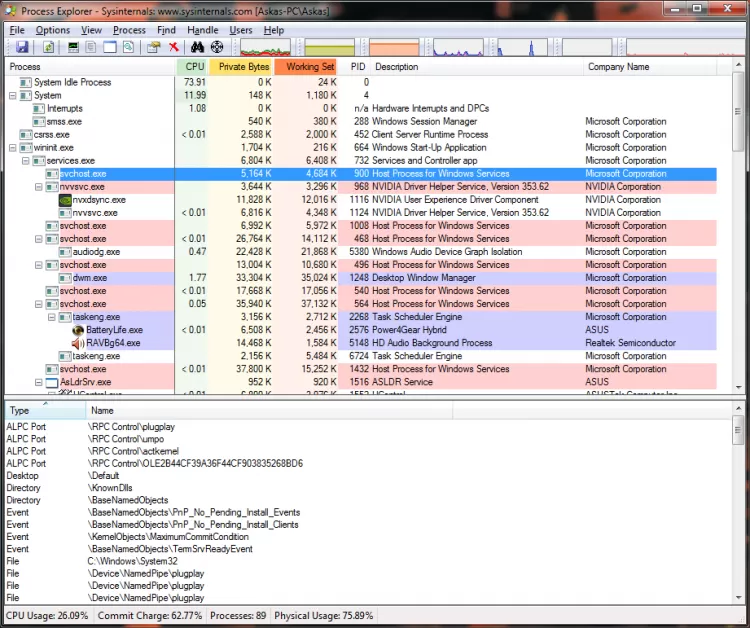

Here’s what it looks like in Process Explorer when you’re doing live monitoring. Here’s a recorded trace of the GPU utilization from the Azure VM while running FishGL in Internet Explorer that’s being visualized in Windows Performance Analyzer:Īs you can see in the WPA screenshot above, quite a few processes can take advantage of the GPU acceleration. In order to do a capture with Windows Performance Recorder, make sure that GPU activity is selected under the profiles to be recorded:
Process explorer gpu software#
When this demo runs using only the software renderer, I observed CPU utilization close to 100% on a fairly beefy NV6 VM that has 6 cores and that just by running a single instance of that test. Only under Windows Server 2016 could high frame rate and low CPU utilization was achieved. This proved to be the scenario that differentiated Windows Server 2016 from Windows Server 2012 R2.Microsoft Fish Tank page which leverages WebGL in the browser which is in turn accelerated by the GPU when possible.

Here’s what it looks like when you run this demo (don’t mind the GPU information displayed, that was from my workstation, not from the Azure NV* VM):.This scenario worked fine in both Windows Server 2012 R2 and Windows Server 2016.Island demo from Nvidia which is available for download here.For load generation I used the following: To validate the acceleration, I used a couple of tools to generate and measure the GPU load. Enable the Group Policy Setting Administrative Templates\Windows Components\Remote Desktop Services\Remote Desktop Session Host\Remote Session Environment\ Use the hardware default graphics adapter for all Remote Desktop Services sessions as shown below:.
Process explorer gpu install#
Process explorer gpu series#
In order to enable hardware acceleration for RDP, you must do the following in your Azure NV* series VM: While Windows Server 2012 R2 does deliver some level of hardware acceleration for graphics, Windows Server 2016 did provide a more complete experience through better support for GPUs in an RDP session. We did experiments with Windows Server 2012 R2 and Windows Server 2016. As we noticed that Internet Explorer was consuming quite a bit CPU resources on our Remote Desktop Services session hosts, I wondered how much of an impact on the CPU using a GPU would do by accelerating graphics through the specialized hardware.

I recently spent some time experimenting with GPU Discrete Device Assignment in Azure using the NV* series of VM.


 0 kommentar(er)
0 kommentar(er)
